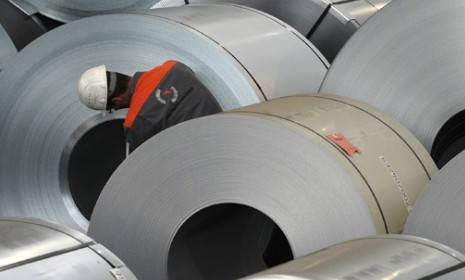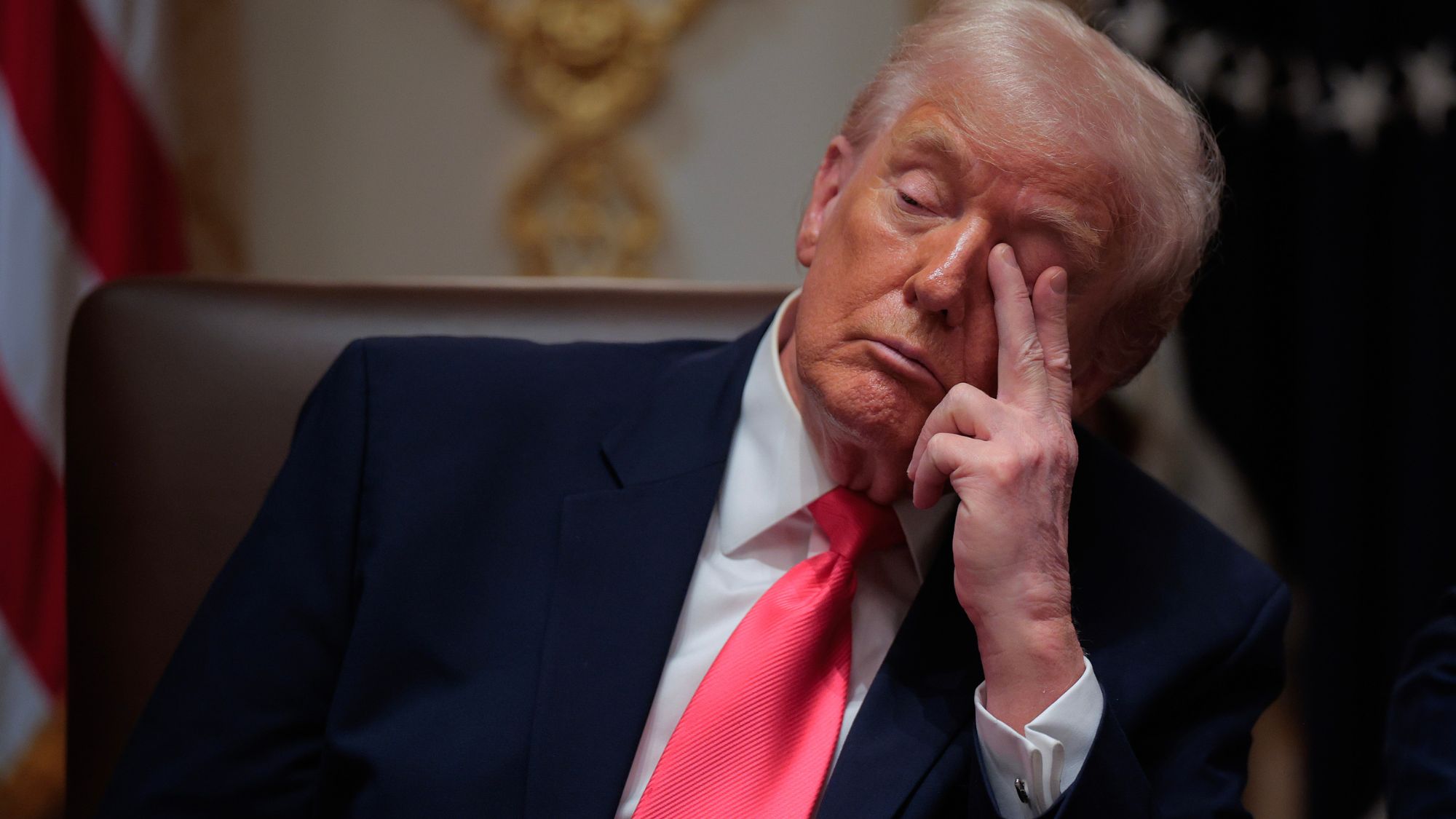The German economic colossus
Europe's largest country is thriving while much of the continent faces economic ruin. Why?

How did Germany become Europe's dominant economy?
Mostly through simple diligence. Germany doesn't owe its success to spectacular innovations or new industries; it's largely the product of steady, stable growth in existing niche industries, a government/private sector partnership, and the German aversion to excess spending and debt. This successful formula has put Germany radically at odds with its deeply indebted European Union partners. Germany's unemployment in December stood at 6.8 percent; Spain's, by contrast, had risen above 20 percent. While Greece, Spain, Portugal, and Italy are now swallowing painful cuts in government spending and employee benefits, most Germans say the euro crisis hasn't affected them personally at all. Germany, in fact, is now the only European country with enough money to bail out its suffering neighbors. Not surprisingly, most Germans are deeply skeptical about any bailout; their sentiments were reflected in a recent Bild headline, "They all want our money!"
How does Europe feel about Germany?
The Week
Escape your echo chamber. Get the facts behind the news, plus analysis from multiple perspectives.

Sign up for The Week's Free Newsletters
From our morning news briefing to a weekly Good News Newsletter, get the best of The Week delivered directly to your inbox.
From our morning news briefing to a weekly Good News Newsletter, get the best of The Week delivered directly to your inbox.
The resentment is palpable, especially in struggling Greece and Italy, which haven't forgotten their domination by the Germans in World War II. Germany's economic strength has enabled Chancellor Angela Merkel to demand that other euro zone countries adopt German budgetary virtue in return for some assistance in paying their debts. In Greece, the Greek government's acquiescence to these demands has led to charges that these leaders are "traitors." Stathis Stavropoulos, a prominent political cartoonist who has depicted Germans as Nazis forcing the Greeks to hand over their money, summed up prevailing sentiment this way: "What Germany did not manage with weapons during World War II, it is now trying to do through economic means."
Do Germans work harder than other Europeans?
No, at least not in sheer time spent on the job. Because of generous vacation policies and shorter working days, German workers logged an average of 1,419 hours in 2010, compared with 1,778 in Italy and the U.S. and 2,109 in Greece. But they work smarter. Germany manufactures well-engineered products that people all over the world buy at high prices. In 2010 Germany exported $1.3 trillion in goods, over $200 billion more than it imported. With a population of 82 million, Germany nearly equals the total export revenue of China, which has 1.3 billion people. Much of what Germany makes is all but invisible to the consumer, who has no idea that a Viessmann boiler heats her water or that a Leitz planer finished her tabletop. But such products add up, along with all those Mercedes and Volkswagens in driveways from Mumbai to Malibu.
Are Germans thriftier?
A free daily email with the biggest news stories of the day – and the best features from TheWeek.com
Without a doubt. The preference for saving money rather than spending it is built into their language, in which the word for debt, Schulden, is the plural form of the word for guilt, Schuld. Germans save an estimated 11.3 percent of their disposable household income, more than twice the rate of Italians or Americans. The aversion to debt and to inflation has its roots in the early 1920s, when the German central bank's efforts to print money to pay reparations for World War I led to prices doubling every day; bread eventually sold for 105 billion marks, or a wheelbarrow full of bills.
Have Germans always been frugal?
Not always. As recently as 2003, Germany was considered the "sick man of Europe." It was reeling under an estimated $1.9 trillion in government spending in the 1990s to modernize East Germany, and suffered both high unemployment and low growth. Driven to act, Social Democratic Chancellor Gerhard Schröder fought the unions and many in his own left-wing party to limit unemployment benefits, rein in pensions, and reform the labor market. His unpopular policies, called Agenda 2010, contributed to his defeat in 2005, but they set Germany on a path to strong, stable economic growth.
So austerity is their secret?
Partly, but not entirely. Modern Germany is neither a socialist paradise nor a model of laissez-faire capitalism. Instead, the German economy is based on close partnerships between the public and private sectors — and between management and workers. A network of state-funded research institutes helps incubate innovation, and worker representatives have long sat on German corporate boards. Before the euro crisis hit, these partners hashed out a scheme called Kurzarbeit, or short-time work, under which the government agreed to supplement wages if companies reduced hours for skilled workers rather than laying them off entirely. Bertram Caspari, personnel director of a Mercedes truck factory south of Berlin, was told in 2008 to slash production by half. "We did not fire a single person," he said. "Not one." If Germany has a lesson for other nations, it's that far-sighted political and business leadership can work wonders, especially if they work together, says Steven Rattner, the financier and former Obama administration auto-industry czar. "The German model shows that a developed country can remain competitive even in a world where new economic giants, such as China, India, and others, are emerging," Rattner says.
The Mittelstand advantage
The U.S. has its high-gloss innovators — Microsoft, Apple, Facebook. Don't look for their counterparts in Germany, where all of the top 10 companies have pre-WWII roots. What makes the German economy hum isn't so much young firms as relentless innovation within old ones, especially the many family-run manufacturers that make up the Mittelstand. These are companies that found niches and transformed them over time into larger markets. Stihl AG, for instance, got its start in 1926 when Andreas Stihl invented an early electric chain saw, which weighed in at 140 pounds. Now the company, run by Stihl's son, is the world market leader in "handheld outdoor power equipment," with plants in Virginia, Brazil, and China. Versions of that story exist in towns throughout Germany, from Winnenden, where Kärcher makes pressure washers, to Nürtingen, where Kugler-Womako builds machines that put the spirals in spiral notebooks. Put simply, Germany is thriving because its companies make high-quality products that people value.
-
 Trump’s poll collapse: can he stop the slide?
Trump’s poll collapse: can he stop the slide?Talking Point President who promised to ease cost-of-living has found that US economic woes can’t be solved ‘via executive fiat’
-
 Codeword: December 7, 2025
Codeword: December 7, 2025The daily codeword puzzle from The Week
-
 Sudoku hard: December 7, 2025
Sudoku hard: December 7, 2025The daily hard sudoku puzzle from The Week